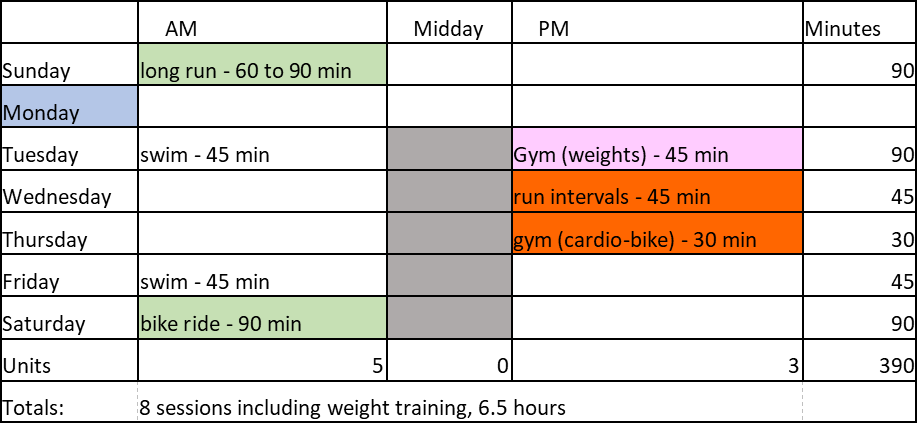For those of you who enjoy a race challenge, here's a great one you can take on any time of year. You can do this race with anyone you work or hang out with, whether they are any kind of athlete or not, no special skills or training needed for this one! Here's the challenge:
- Let's have a lunchtime race: you go to your choice of fast food joints and I'll head to the kitchen and make my lunch.
The overall winner can be picked based purely on time to complete the task but we can add in nutrient quality and satiation objective measurements too. Here's the trick: if you love this recipe, it doesn't matter who wins the lunchtime race.
1-2-3 Go - The Race Is On!
I brought my stuff for lunch but I still have to prepare it. I am making a chicken & rice bowl with fresh veg and avocado and a Sesame Coconut Thai dressing. I added the ingredients to my weekly shopping list and brought them to the office. The only real prep I did at home is that I grilled enough chicken for 4 lunches for the week and packaged them to take to work.
Steps
- Heat up the rice in the pouch, 2 minutes.
- While that is happening, cut the chicken into cubes.
- Put half of the rice packet into the bottom of the serving bowl.
- Heat up the chicken for about 30 seconds (optional but I prefer it).
- Layer the rest of bowl with
- - the chopped, heated chicken on top of the rice.
- - a handful of fresh greens. Any kind work but I usually use Arugula-Spinach blend.
- - half an avocado (also optional)
- - sometimes I add nuts or seeds for something crunchy.
- - pour on 2 tablespoons of sauce. Right now, I'm using a Sesame Coconut Thai sauce but Goddess Dressing is also pretty fantastic.
 |  |  |
 |  |  |
 |  |  |
That's all there is to it. Stir and eat. Here's where my meal might take longer: I will chew on the rice, chicken and sauce and savour every bite. I'm going to take my time with this as much as I can, it's just that good.
Race Results
Is your buddy back from picking up fast food yet? Like I say above, if you like this recipe, it doesn't matter if fast food is faster. For me, this recipe is the winner over fast food.
In terms of nutrition quality, this isn't a super low-calorie dish. It is arguably a little high in fat and sodium content but a lof those two levels are from the sauce or dressing. You could choose a different sauce or dressing and/or reduce the amount of dressing to address those points. I'm not on any weight loss diet and my sodium intake is moderate so, on those two measurements, this recipe works just fine for me.
This bowl delivers 34g of protein and complex carbs which I'm happy with it. But I hope the takeaway here is that with a little planning, you can have an easy, nutrient-dense meal in just a few minutes. It only takes a small amount of time to eat real and eat well.
Note: The nutrition label was generated at happyforks.com using their free recipe analyzer tool.








